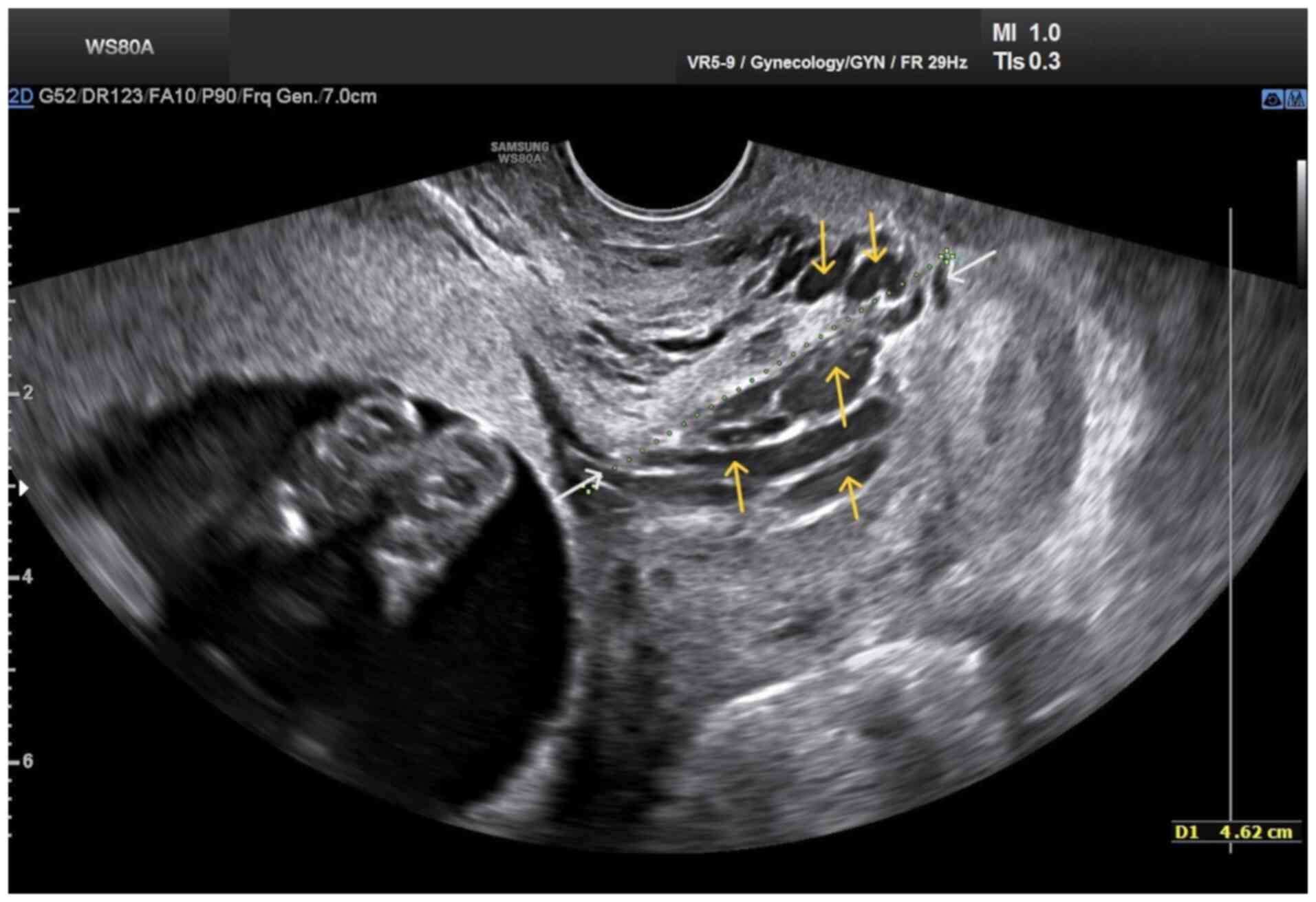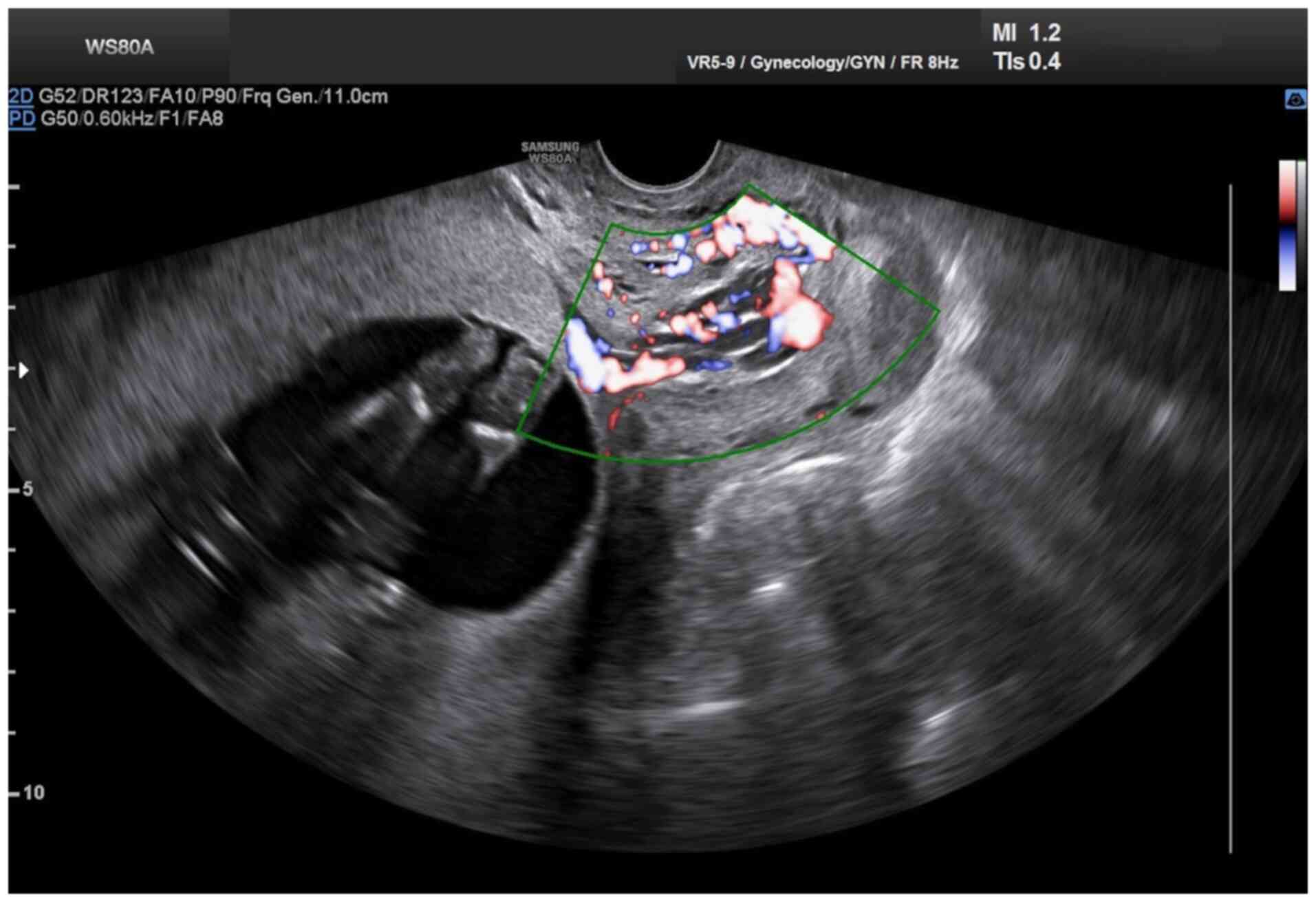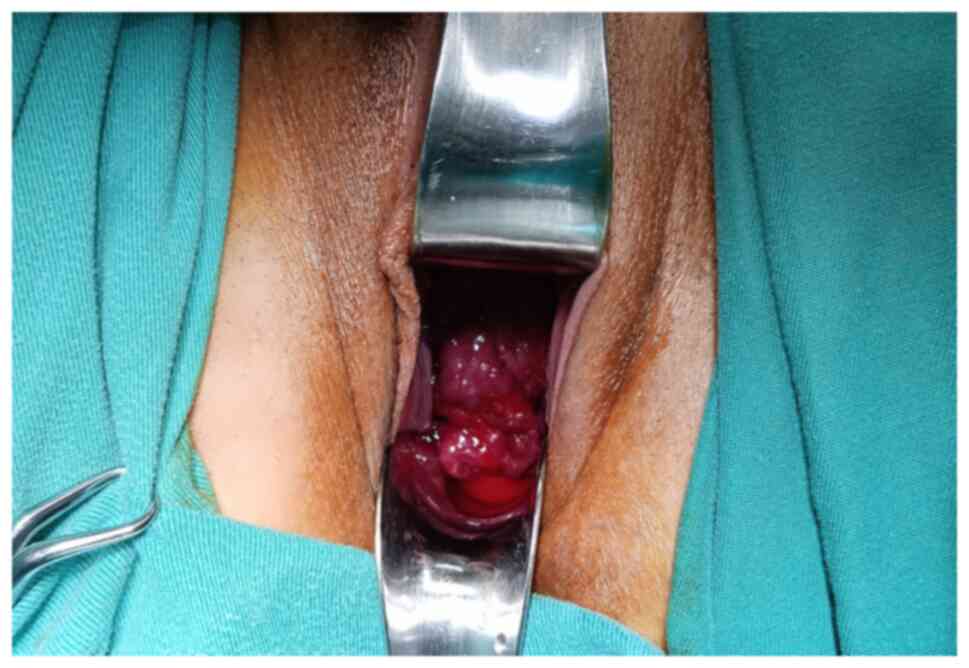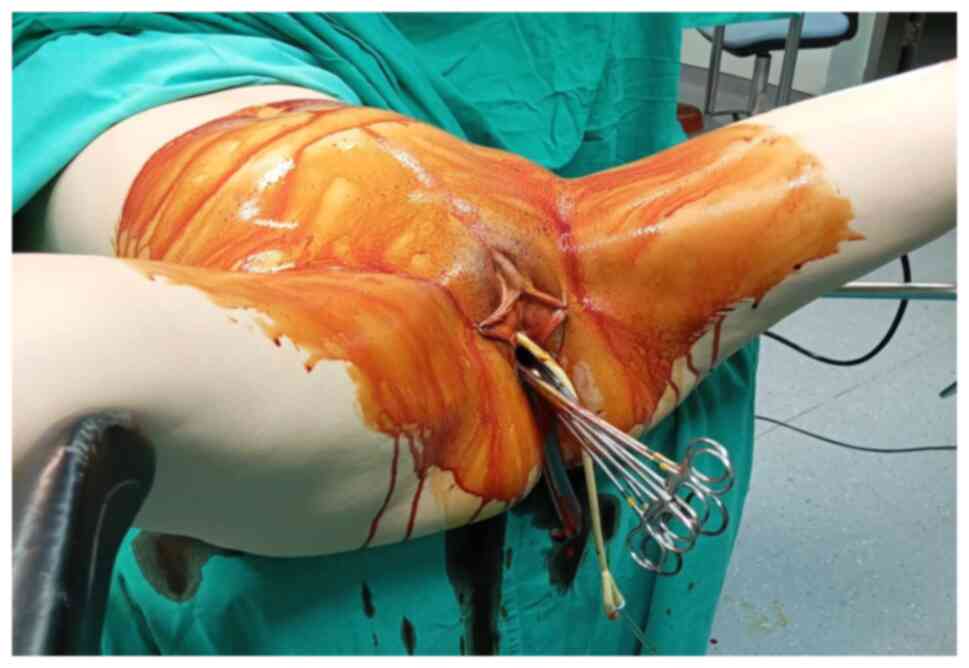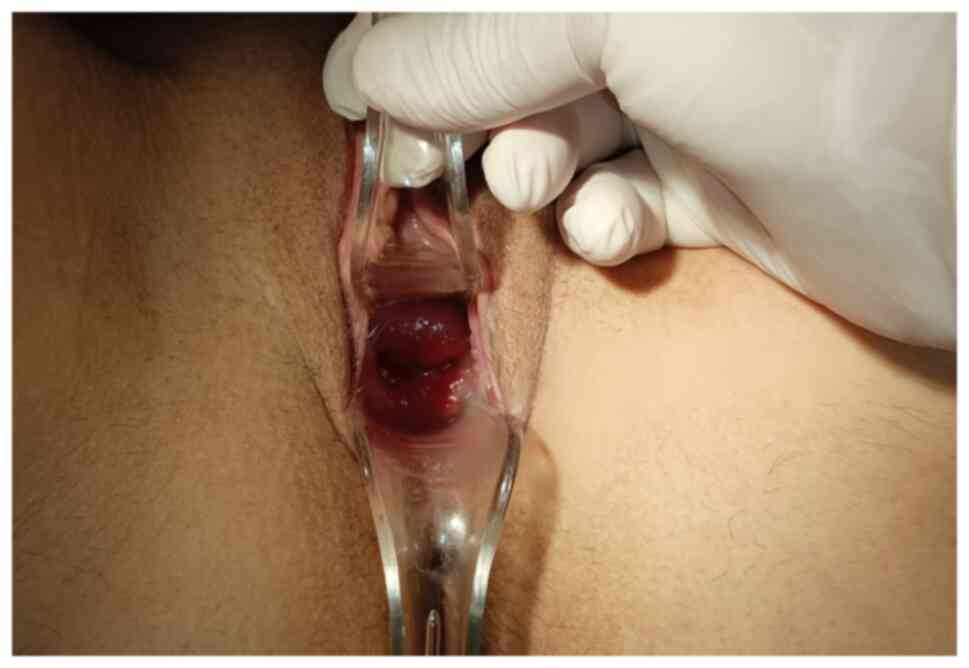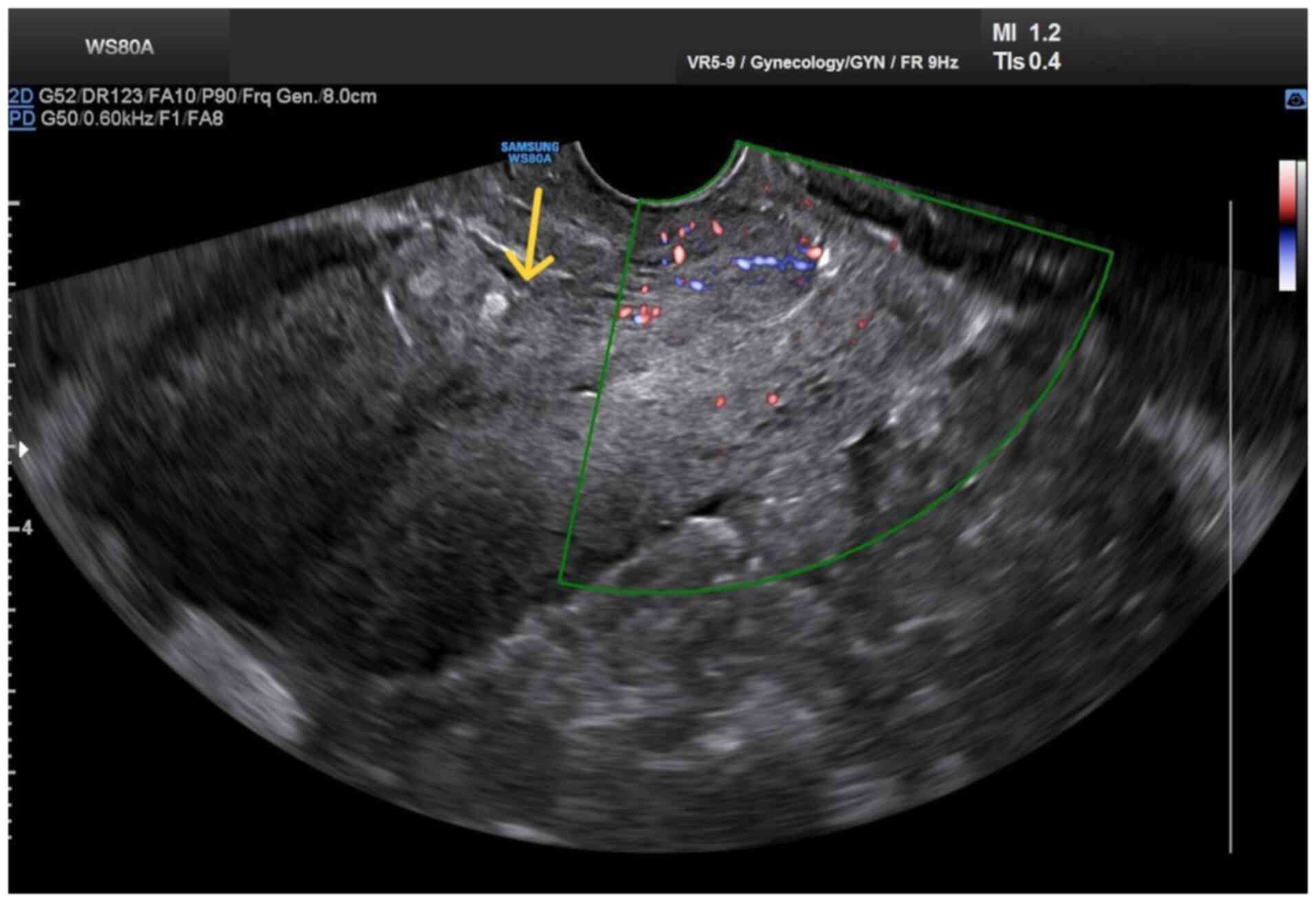|
1
|
Raetz J, Wilson M and Collins K: Varicose
veins: Diagnosis and treatment. Am Fam Physician. 99:682–688.
2019.PubMed/NCBI
|
|
2
|
Ismail L, Normahani P, Standfield NJ and
Jaffer U: A systematic review and meta-analysis of the risk for
development of varicose veins in women with a history of pregnancy.
J Vasc Surg Venous Lymphat Disord. 4:518–524.e1. 2016.PubMed/NCBI View Article : Google Scholar
|
|
3
|
Gavrilov SG: Vulvar varicosities:
Diagnosis, treatment, and prevention. Int J Womens Health.
9:463–475. 2017.PubMed/NCBI View Article : Google Scholar
|
|
4
|
Giannella L, Montanari M, Delli Carpini G,
Di Giuseppe J and Ciavattini A: Huge vulvar varicosities in
pregnancy: Case report and systematic review. J Int Med Res.
50(3000605221097764)2022.PubMed/NCBI View Article : Google Scholar
|
|
5
|
Poliektov N and Kahn BF: Bleeding cervical
varices in pregnancy: A case report and review of the literature. J
Neonatal Perinatal Med. 15:195–202. 2022.PubMed/NCBI View Article : Google Scholar
|
|
6
|
Wax JR, Cartin A, Litton C, Conroy K and
Pinette MG: Cervical varices: An unusual source of first-trimester
hemorrhage. J Clin Ultrasound. 46:218–221. 2018.PubMed/NCBI View Article : Google Scholar
|
|
7
|
Tanaka M, Matsuzaki S, Kumasawa K, Suzuki
Y, Endo M and Kimura T: Cervical varix complicated by placenta
previa: A case report and literature review. J Obstet Gynaecol Res.
42:883–889. 2016.PubMed/NCBI View Article : Google Scholar
|
|
8
|
Thorp JM Jr, Fowler WC, Donehoo R, Sawicki
C and Bowes WA Jr: Antepartum and intrapartum events in women
exposed in utero to diethylstilbestrol. Obstet Gynecol. 76:828–832.
1990.PubMed/NCBI View Article : Google Scholar
|
|
9
|
Yoshimura K, Hirsch E, Kitano R and
Kashimura M: Cervical varix accompanied by placenta previa in twin
pregnancy. J Obstet Gynaecol Res. 30:323–325. 2004.PubMed/NCBI View Article : Google Scholar
|
|
10
|
Youssef J, Afolayan V, Mack M and Sze A:
Cervical varicosities, an uncommon cause of third-trimester
bleeding in pregnancy: A case report. Case Rep Womens Health.
38(e00507)2023.PubMed/NCBI View Article : Google Scholar
|
|
11
|
Kurihara Y, Tachibana D, Teramae M,
Matsumoto M, Terada H, Sumi T, Koyama M and Ishiko O: Pregnancy
complicated by cervical varix and low-lying placenta: A case
report. Jpn Clin Med. 4:21–24. 2013.PubMed/NCBI View Article : Google Scholar
|
|
12
|
Peng MY, Ker CR, Lee YS, Ho MC and Chan
TF: Cervical varices unrelated to placenta previa as an unusual
cause of antepartum hemorrhage: A case report and literature
review. Taiwan J Obstet Gynecol. 57:755–759. 2018.PubMed/NCBI View Article : Google Scholar
|
|
13
|
Kusanovic JP, Soto E, Espinoza J, Stites
S, Gonçalves LF, Santolaya J, Nien JK, Erez O, Sorokin Y and Romero
R: Cervical varix as a cause of vaginal bleeding during pregnancy:
Prenatal diagnosis by color Doppler ultrasonography. J Ultrasound
Med. 25:545–549. 2006.PubMed/NCBI View Article : Google Scholar
|
|
14
|
González-Bosquet E, Grau L,
Ferrero-Martínez S, Hernandez-Saborit A, Rebollo M, Gomez-Chiari M,
Martínez Crespo JM and Gómez-Roig MD: Pessary for management of
cervical varices complicating pregnancy. Obstet Gynecol.
138:482–486. 2021.PubMed/NCBI View Article : Google Scholar
|
|
15
|
Lesko J, Carusi D, Shipp TD and Dutton C:
Uterine artery embolization of cervical varices before
second-trimester abortion. Obstet Gynecol. 123 (2 Suppl
2):S458–S462. 2014.PubMed/NCBI View Article : Google Scholar
|
|
16
|
Kumazawa Y, Shimizu D, Hosoya N, Hirano H,
Ishiyama K and Tanaka T: Cervical varix with placenta previa
totalis. J Obstet Gynaecol Res. 33:536–538. 2007.PubMed/NCBI View Article : Google Scholar
|
|
17
|
Sammour RN, Gonen R, Ohel G and Leibovitz
Z: Cervical varices complicated by thrombosis in pregnancy.
Ultrasound Obstet Gynecol. 37:614–616. 2011.PubMed/NCBI View
Article : Google Scholar
|
|
18
|
Wong CK, Hung CMW, Ng VKS, Yung WK, Leung
WC and Lau WL: Four cases of cervical varices without placenta
praevia: Presentation, diagnosis, managements, and literature
review. J Obstet Gynaecol Res. 48:1997–2004. 2022.PubMed/NCBI View Article : Google Scholar
|
|
19
|
Saedi N, Ghaemi M, Moghadam M, Haddadi M,
Hashemi Z and Hantoushzadeh S: Emergency postpartum hysterectomy as
a consequence of cervical varix during pregnancy; a case report and
literature review. Int J Surg Case Rep. 108(108425)2023.PubMed/NCBI View Article : Google Scholar
|
|
20
|
Park JE, Kim MJ, Kim MK and Kim HM:
Cervical varix with thrombosis diagnosed in the first trimester of
pregnancy. Obstet Gynecol Sci. 62:65–68. 2019.PubMed/NCBI View Article : Google Scholar
|















